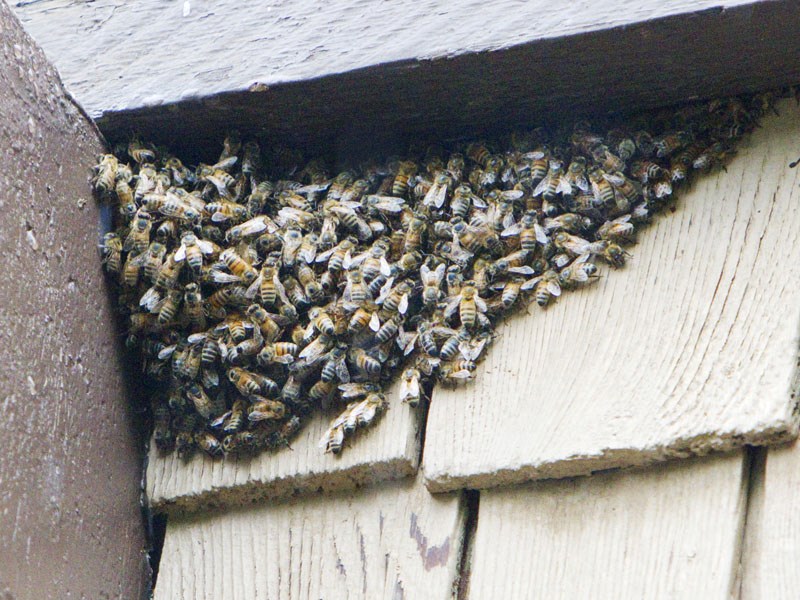All that Maureen Jackson was concerned about was whether or not she could get free honey.
The Grandin resident learned on Tuesday afternoon that a small colony of bees had once again made its home near the upper level of her detached garage. No big deal, she said.
"My neighbours get worried about it, but they don't bother me," she admitted.
About 1,000 of the bees were easily and promptly removed by a bee relocator — also known as a swarm catcher — using a bee vacuum. There was no word on their fate but they were likely added to an existing bee colony elsewhere.
The next day, there were several dozen bees still spotted at the site.
"The exterminators don't like to get rid of them because we need them. There's less and less of them out there," Jackson said.
This isn't the first time that she's had this experience, something she prefers not to describe as a problem. The bees keep coming back year after year. To her, they're just their doing their own thing and not bothering anybody.
According to the Alberta Beekeepers' Commission, honeybees are relatively large, slim insects (about 1.2 centimetres long), with three distinct body parts and four wings. They are covered with short hair and range in colour from a dusty yellow to almost black, often with a few bands of contrasting colour across their abdomens.
What the buzz was all about
Local bee hobbyist Tony Rafaat could only guess as to why the event keeps recurring at Jackson's house.
"In my opinion, there's either perhaps some sort of a chemical attractant or a chemical residue of some type, or that's where they were living," speculated the beekeeper and director-at-large with the commission.
"The latter one I think would be the more obvious one, that there was some manner of colony there that shrunk considerably over the winter months as it probably didn't have enough food in there. That's one of the leading causes of death for swarming colonies. They just don't have enough time to get enough food stored for our long and hard winters."
He didn't even use the word "swarm" when describing this situation. He called it more of a "conglomeration."
He added that. at about the same time, he was also called by a major utility company that had a swarm on a tree near one of its warehouses in north Edmonton. When he arrived, however, the bees had already moved on, but the security footage showed him what he missed.
"They had a big swarm up in a tree. That thing was huge. It was like a big ball wrapped around a large branch!"
He ended by stating that, should members of the public experience the same phenomenon, they should first get in touch with either the Alberta Beekeepers' Commission at 780-489-6949 or www.albertabeekeepers.org, or the Edmonton District Beekeepers' Association at sites.google.com/a/spschools.org/eba.




